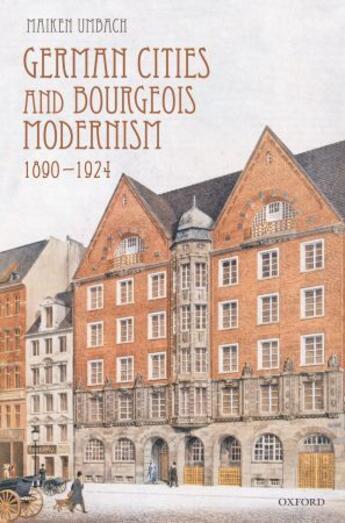Découvrez les derniers trésors littéraires de l'année !
Passionné(e) de lecture ? Inscrivez-vous
gratuitement ou connectez-vous pour rejoindre la
communauté et bénéficier de toutes les fonctionnalités du site !

Illuminates the distinctive brand of bourgeois modernism that emerged in late nineteenth century Germany and remained highly influential Indicates how the infrastructure of social and political life was reshaped by the new movement Shows how bourgeios modernism transformed the physical environment of German cities This is a study of a distinctive brand of modernism that first emerged in late nineteenth-century Germany and remained influential throughout the inter-war years and beyond. Its supporters saw themselves as a new elite, ideally placed to tackle the many challenges facing the young and rapidly industrializing German nation-state. They defined themselves as bourgeois, and acted as self-appointed champions of a modern consciousness. Focusing on figures such as Hermann Muthesius, Fritz Schumacher, and Karl-Ernst Osthaus, and the activities of the Deutscher Werkbund and other networks of bourgeois designers, writers, and 'experts', this book shows how bourgeois modernism shaped the infrastructure of social and political life in early twentieth-century Germany.
Bourgeois modernism exercised its power not so much in the realm of ideas, but by transforming the physical environment of German cities, from domestic interiors, via consumer objects, to urban and regional planning. Drawing on a detailed analysis of key material sites of bourgeois modernism, and interpreting them in conjunction with written sources, this study offers new insights into the history of the bourgeois mindset and its operations in the private and public realms. Thematic chapters examine leitmotifs such as the sense of locality and place, the sense of history and time, and the sense of nature and culture. Yet for all its self-conscious progressivism, German bourgeois modernism was not an inevitable precursor of neo-liberal global capitalism. It remained a hotly contested historical construct, which was constantly re-defined in different geographical and political settings.
Readership: All those interested in German history in the early 20th century, the history of modernism, urban history, and cultural history (especially the history of material culture)
Il n'y a pas encore de discussion sur ce livre
Soyez le premier à en lancer une !

Découvrez les derniers trésors littéraires de l'année !

"On n'est pas dans le futurisme, mais dans un drame bourgeois ou un thriller atmosphérique"

L'auteur se glisse en reporter discret au sein de sa propre famille pour en dresser un portrait d'une humanité forte et fragile

Au Rwanda, l'itinéraire d'une femme entre rêve d'idéal et souvenirs destructeurs